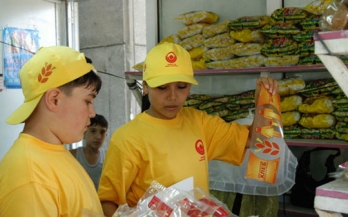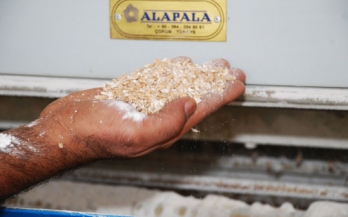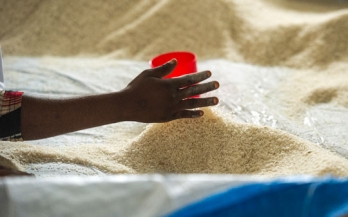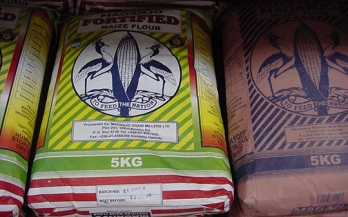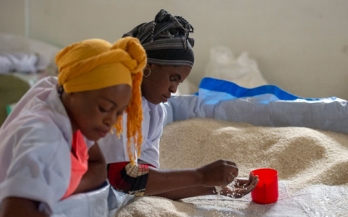- 25/11/2015
This report presents findings from a series of in vivo and in vitro studies to optimize iron fortification of rice in terms of iron bioavailability and sensory acceptability. It has been suggested, that zinc can negatively influence iron absorption.
- 01/01/2013
This report presents the findings of a Large Country-Lot Quality Assurance Sampling (LC-LQAS) survey that was conducted to evaluate the current coverage and impact of the national flour fortification programme (NFFP) after five years of implementation of the NFFP. The LC-LQAS method was used to design a sample that was representative nationally and within the programme catchment areas.
- 15/07/2011
This report summarises the findings of the 2010 micronutrient survey conducted in Jordan in March and April 2010. The survey follows an earlier micronutrient survey conducted in 2002, four to five months after the start of a national flour fortification program.
- 01/08/2016
In 2014, a national survey on iodine coverage and utilisation was conducted in Senegal to better understand factors associated with access to adequately iodised salt, and to provide an evidence base from which to plan, monitor and evaluate a revised strategy for achieving optimal iodine nutrition.
The 2013 Senegal Fortification Assessment Coverage Toolkit (FACT) survey was the first FACT survey conducted by the Global Alliance for Improved Nutrition. The aim of the survey was to determine whether women of reproductive age and children receive a meaningful contribution of iron and vitamin A from fortified wheat flour and oil, respectively.
The 2015 Nigeria Fortification Assessment Coverage Toolkit (FACT) survey is a cross-sectional survey that is representative at the state level in the two states of Kano and Lagos. The purpose of the survey was to assess the coverage and potential contribution of fortified foods to the micronutrient intake of the population.
The 2015 South Africa Fortification Assessment Coverage Toolkit (FACT) survey is a cross-sectional survey that is provincially-representative in the two provinces of Gauteng and Eastern Cape.
The 2015 Uganda Fortification Assessment Coverage Toolkit (FACT) survey is a cross-sectional survey that is nationally representative and representative of urban and rural areas. The purpose of the survey was to assess the coverage and potential contribution of fortified foods to the micronutrient intake of the population.
The 2015 Tanzania Fortification Assessment Coverage Toolkit (FACT) survey is a cross-sectional survey that is nationally representative and representative of urban and rural areas. The purpose of the survey was to assess the coverage and potential contribution of fortified foods to the micronutrient intake of the population.
The 2016 Kazakhstan Fortification Assessment Coverage Toolkit (FACT) survey is a cross-sectional survey that is nationally representative and representative of urban and rural areas. The results provide evidence of programme performance, identify programme barriers, and estimate potential for impact.

